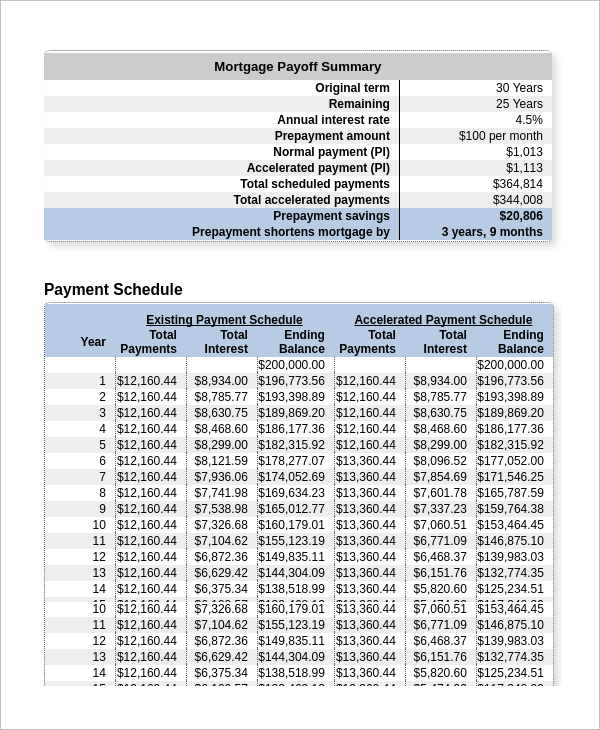

- Mortgage calculator extra payment calculation pro#
- Mortgage calculator extra payment calculation free#
Instead of putting extra money toward your mortgage, it might be wiser to contribute more in your retirement accounts. Generally speaking, the money you save on interest rarely outweighs the money you can earn through investments. You’ll need cash for your down payment, closing costs, and moving fees. Home purchases require a lot of liquid cash (i.e., money that’s not tied up in your home equity). Focus on paying off high-interest debts first before you make extra monthly mortgage payments. When you SHOULD NOT make extra mortgage paymentsĬredit cards and personal loans typically have higher interest rates than mortgages. For example, if you’re planning on retiring soon, cutting out your monthly mortgage payment will drastically reduce your retirement expenses, helping you live longer on your savings. Paying your mortgage early frees up your income and allows you to focus on other goals. Only when your finances are rock-solid does it make sense to add an extra mortgage payment. You have an emergency fund, you’re saving for retirement, you and your family are properly insured, you don’t have high-interest debts, and your income is stable. When you SHOULD make extra mortgage payments Is it worth making extra mortgage payments? Your interest rate, on the other hand, doesn’t include additional costs, like loan origination fees or mortgage points. It includes your interest rate, loan fees, and any other annual costs. What’s the difference between interest rates and APR?Īn annual percentage rate (APR) is a much broader measure of what you pay to borrow money. As you pay down your initial loan, your interest charges gradually decrease.įor instance, if you have an interest rate of 5% on a home loan of $300,000, you would pay $15,000 in interest charges for the first year (or $1,250 per month).

📈 Interest rate: what you pay to borrow money to purchase your home, calculated as a percentage of your loan balance. When you put extra money toward your initial loan balance (the principal), you can pay your loan faster and save on interest. 💸 Extra payments: what you pay in addition to your regular monthly mortgage payments. For example, if you’ve been paying a 30-year mortgage for 5 years, then you have 25 years left. 🗓 Years remaining: the time that’s left on your mortgage. For example, a 30-year mortgage would have a loan term of 30 years. 🕒 Term of the loan: the amount of time you’ve agreed to pay off your mortgage. When you make extra mortgage payments, you’re reducing this initial loan. 💰 Initial loan amount: how much you originally borrowed to purchase your home.
Mortgage calculator extra payment calculation free#
Save thousands if you decide to sell! 100% free with no obligation.
Mortgage calculator extra payment calculation pro#

Repayment term: The repayment term of a loan is the number of months or years it will take for you to pay off your loan.You can use Bankrate’s APR calculator to get a sense of how your APR may impact your monthly payments. APR: The APR on your loan is the annual percentage rate, or cost per year to borrow, which includes interest and other fees.This rate is charged on the principal amount you borrow. Interest rate: An interest rate is the cost you are charged for borrowing money.When taking out any loan, it’s important to understand these four factors: Common types of unsecured loans include credit cards and student loans. Unsecured loans don’t require collateral, though failure to pay them may result in a poor credit score or the borrower being sent to a collections agency. In exchange, the rates and terms are usually more competitive than for unsecured loans. Common examples of secured loans include mortgages and auto loans, which enable the lender to foreclose on your property in the event of non-payment. Secured loans require an asset as collateral while unsecured loans do not.


 0 kommentar(er)
0 kommentar(er)
